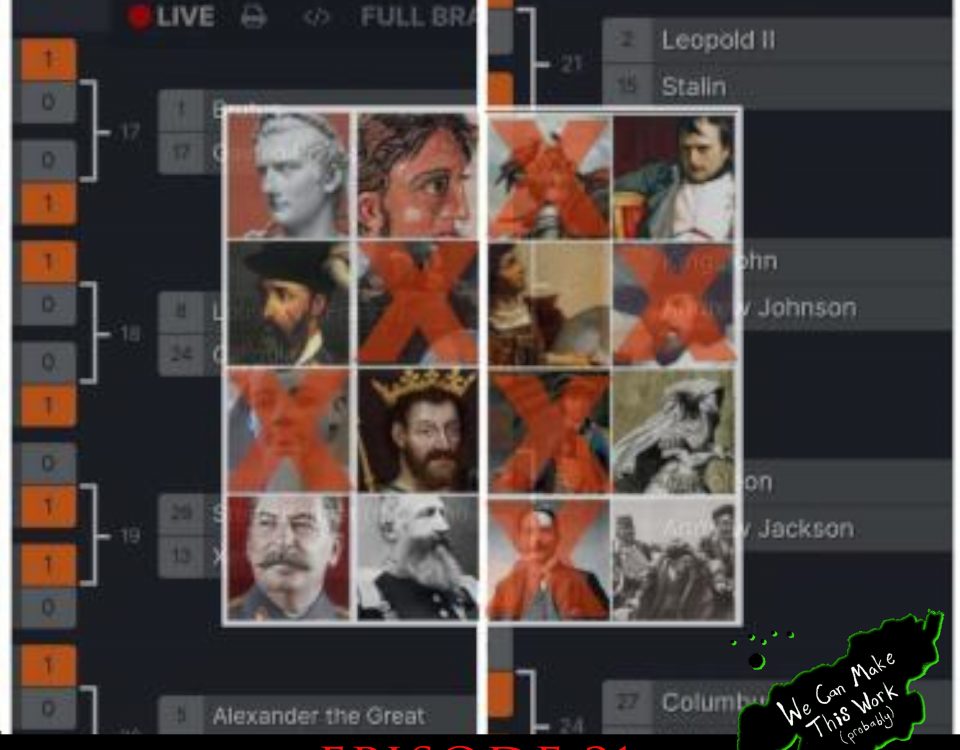
The Epik Fails of History Podcast!
May 6, 2018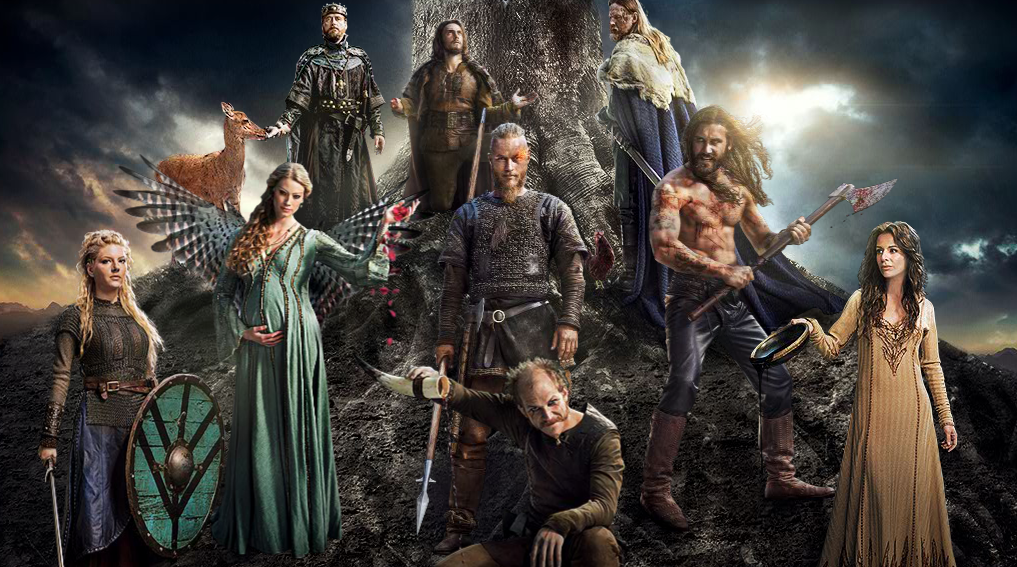
7 of the Most Insane VIKING Sagas Ever! (Part 1 of 2)
May 22, 2018The Third Servile War 73-71 BCE
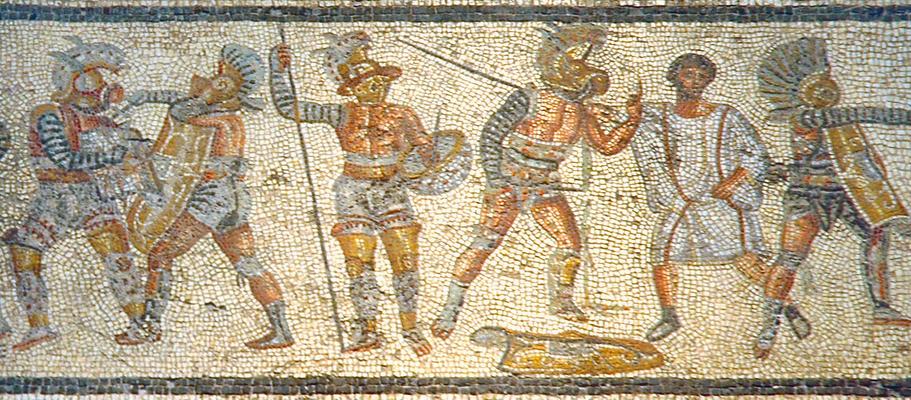
“When a free man dies, he loses the pleasure of life. A slave loses his pain. Death is the only freedom a slave knows. That’s why he’s not afraid of it. That’s why we’ll win.”
– Spartacus (Kirk Douglas, 1960)
Spartacus is the legendary story of a gladiator who rebelled against his masters, led a slave uprising against the might of the Roman military and died fighting for his freedom. It’s an inspiring allegory of hope and bravery in the face of certain doom.
It’s also true.
During the later years of the Roman Republic, gladiator games had become all the rage. To the Roman citizens of the time, these were the equivalent of modern sports events: crazed fans would flock to arenas where they would cheer on their favorite competitors. The main difference of course was that these athletes didn’t always make it out alive. All for the amusement of the masses.
(Think football with decapitations.)

No, not those guys…
The Roman gladiators were slaves who trained, fought, and died to appease the crowds. They were often armed with lethal weapons and pitted against one another in an arena. Gladiators were occasionally ‘recruited’ criminals or prisoners from conquered armies and trained under a ludus, which was basically gladiator school: less of a gym and more of a Mortal Kombat style prison camp.

Most of the students never, um… ‘graduated’.
The man who came to became known as ‘Spartacus’ was a Thracian soldier, who became a prisoner of war. He was sold to Lentulus Batiatus and brought in chains to the Roman city of Capua, where he was forced to swear allegiance to the ludus and took an oath to be burned, chained, beaten and killed by an iron weapon. Think Mad Max: Beyond Thunderdome.
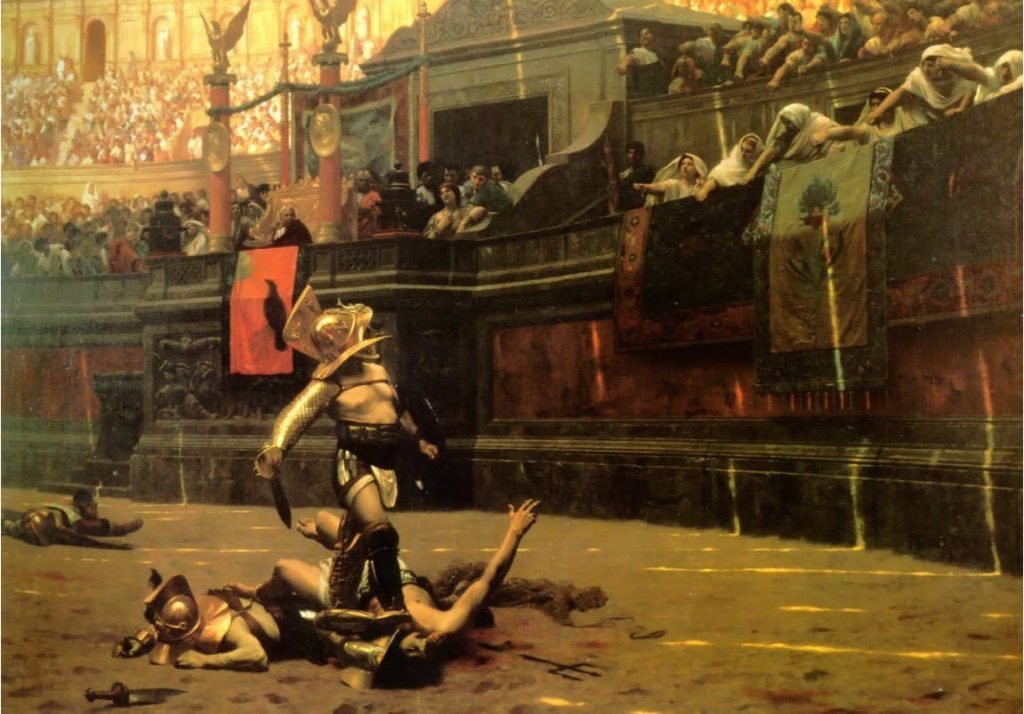
“Two men enter, one man leaves.”
In the ludus, the gladiators trained with swords, shields, nets, tridents, and clubs. Among these fellow gladiators were two Gallic slaves called Crixus and Oenomaus. It’s also worth noting that many of these gladiators were celebrities, some even endorsed products and most of them probably used stage names, like WWE’s Macho Man Randy Savage.

The name ‘Spartacus’ was probably a reference to the Greek Spartans who held their ground against the might of the Persian Empire during the Battle of Thermopylae. Spartacus quickly became a heavyweight champion and slowly began to gather supporters, both in the arena and outside of it. Between death matches, Spartacus and his allies began to plan their escape.
 When the opportunity finally came to make a break for it, someone betrayed them (because of course they did). Spartacus and about 70 other gladiators decided to drop their elaborate escape plan and improvise. They stormed the kitchen and grabbed anything sharp enough to stab their way out with and began a long montage of Tarantino-esque executions.
When the opportunity finally came to make a break for it, someone betrayed them (because of course they did). Spartacus and about 70 other gladiators decided to drop their elaborate escape plan and improvise. They stormed the kitchen and grabbed anything sharp enough to stab their way out with and began a long montage of Tarantino-esque executions.
After fighting their way to freedom, the slave rebellion raided several wagons full of gladiator weapons and armor. Instead of making a run for it to retire in some faraway land, Spartacus, Crixus and Oenomaus banded together and started a movement. What started as a small revolt, soon turned into a full slave uprising. Spartacus and his men plundered supply lines along the Roman roads, freed and recruited slaves and eventually organized into an army of thousands!
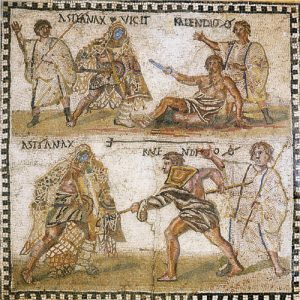 The Roman legions had been busy off fighting in Spain when Spartacus’s rebellion began to gain momentum. Rumors began to circulate that Spartacus was planning an assault on Rome itself, which made the nobility nervous. In response, the Roman senate sent in praetor Gaius Claudius Glaber and a Roman militia to stop the rebellion in its tracks.
The Roman legions had been busy off fighting in Spain when Spartacus’s rebellion began to gain momentum. Rumors began to circulate that Spartacus was planning an assault on Rome itself, which made the nobility nervous. In response, the Roman senate sent in praetor Gaius Claudius Glaber and a Roman militia to stop the rebellion in its tracks.
Spartacus set up camp on Mount Vesuvius (the volcano that would later destroy Pompeii) where they were besieged by Glaber’s force of 3,000 soldiers. Glaber intended to block off the route and starve them out, but had underestimated the ingenuity of his enemy. Spartacus’s men used vines to repel down the mountainside, behind Glaber’s army where they made short work of them. I just wish I could see Glaber’s face when he saw these ‘uncivilized barbarians’ repelling down the mountainside like Seal Team Six operatives in a Tom Clancy novel.
The rebels continued to face down impossible odds and repeatedly came out on top. It seemed as though Spartacus was unstoppable. So did they ultimately lead the rebels to victory, end slavery, and live happily ever after?

After hearing that Spartacus had taken down two whole legions, the Roman senate began to sweat. They chose Marcus Licinius Crassus to bring down Spartacus once and for all. He was given 8 legions – a total of 40,000 Roman soldiers! Meanwhile, another up and coming Roman politician, Pompey (the Great), was heading back from Spain. Crassus was determined to bring Spartacus down before his rival got the chance to show him up.
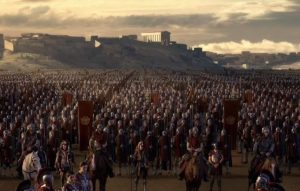 During this time, Spartacus attempted to gain passage to Sicily to gain reinforcements. They made a deal with some Cilician pirates, who immediately betrayed them. Spartacus’s men retreated, but were met by Crassus’s forces as they attempted to route them south and cut off their supplies.
During this time, Spartacus attempted to gain passage to Sicily to gain reinforcements. They made a deal with some Cilician pirates, who immediately betrayed them. Spartacus’s men retreated, but were met by Crassus’s forces as they attempted to route them south and cut off their supplies.
Upon getting intel that Roman reinforcements were en route, Spartacus decided to go before Crassus in an attempt to bargain. It didn’t go well.
Spartacus returned to his men with the bad news. During a pump-up speech to his troops, he had his horse brought out to him. He drew his sword and slew his own horse. Spartacus proclaimed that if they won this day, he would have hundreds of horses to choose from, but if they should fail, he wouldn’t need one.
Turns out, he didn’t need the horse after all…
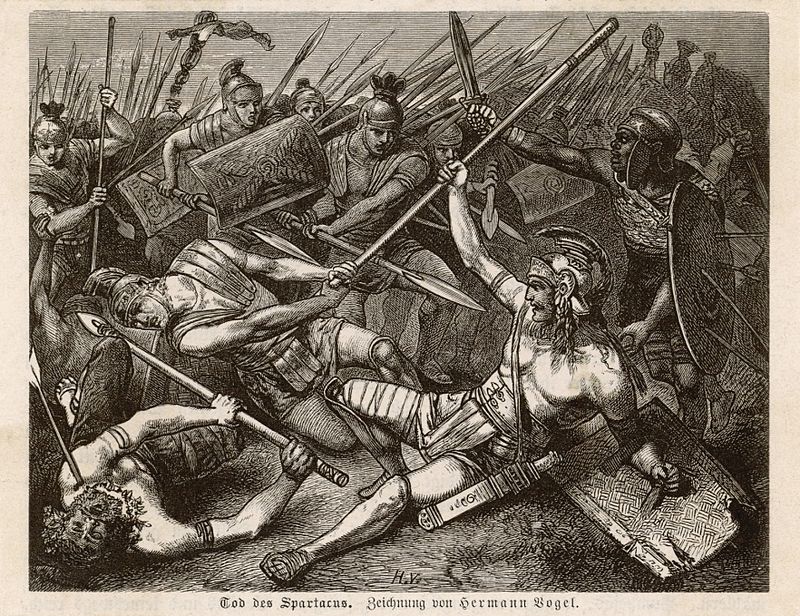
Spartacus fell at the Battle of the Silarius River, along with 36,000 rebels. Crassus captured and crucified 6,000 former slaves as a warning to others. Pompey came in with the clean up crew and crucified another 5,000 more who attempted to flee. (Romans really liked to crucify people.) Gladiator games continued in Rome for another 400 years.
Spartacus’s uprising may have ultimately failed, but the legend of his rebellion lives on and continues to inspire those fighting against the injustices of their own time, all these centuries later.
Erik Slader
Thanks for reading! If you’re a fan of the blog, be sure to listen to the Epik Fails of History podcast and check out my all new “EPIC FAILS” book series – available now wherever books are sold!
Sources:
“The Spartacus War” by Barry Strauss
“Spartacus: Blood and Sand” (2010-2013)
https://en.wikipedia.org/wiki/Spartacus
http://www.vroma.org/~bmcmanus/spartacus.html
https://www.history.com/news/history-lists/10-things-you-may-not-know-about-roman-gladiators

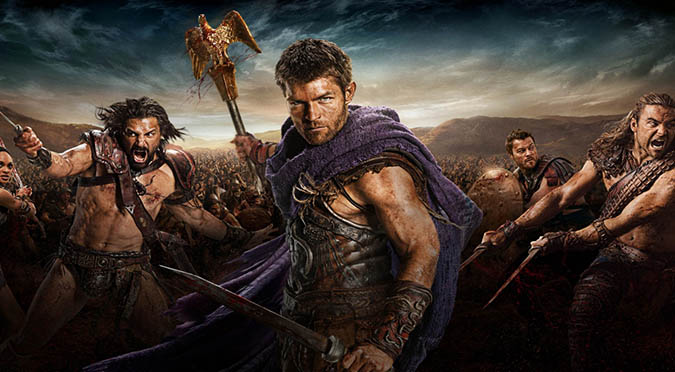

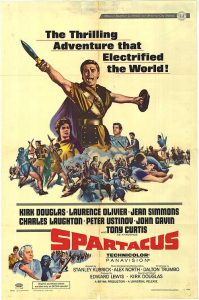 Top 5 Worst Roman Emperors
Top 5 Worst Roman Emperors

